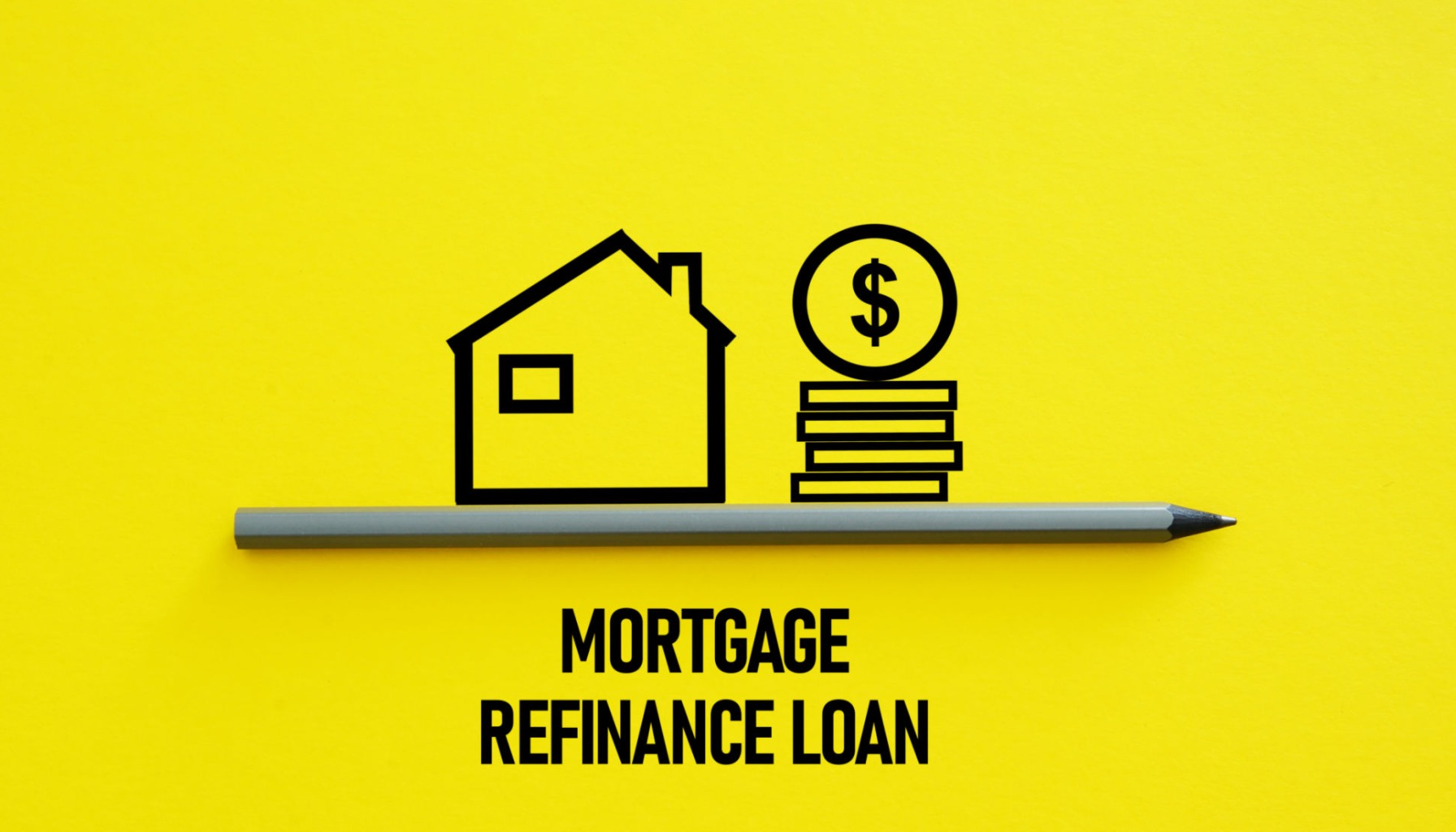The exciting news for homeowners and potential buyers is here: Mortgage rates today are showing a significant drop, with the average 30-year fixed refinance rate plunging by a remarkable 19 basis points. This is a real game-changer, and if you’ve been on the fence about refinancing, now might be the perfect time to explore your options. Zillow reported that the national average 30-year fixed refinance rate has fallen to 6.75%, down from 6.94% just last week. This isn't just a small dip; it’s a substantial move that could put more money back into your pocket each month.
Mortgage Rates Today: 30-Yr Fixed Refinance Rate Plunges by 19 Basis Points
What a 19 Basis Point Drop Really Means for Your Wallet
Let's break down what that 19-basis-point drop actually translates to for your monthly payment. While it might sound like a technical term, it means real savings. For example, if you have a $300,000 mortgage, a 0.19% decrease in your interest rate can save you around $30-$40 per month. Over the life of a 30-year loan, that adds up to thousands of dollars!
Think about it this way: When rates go down, a portion of your monthly mortgage payment that used to go towards interest can now be directed towards principal, helping you pay off your home faster. Or, you could simply enjoy that extra cash for other financial goals, like saving for retirement, investing, or even taking a well-deserved vacation. In my experience, homeowners who seize opportunities like this often see a significant improvement in their financial flexibility.
Refinance Timing: Locking in Rates Before Potential Shifts
The big question on everyone’s mind is, “Will rates go down further?” Federal Reserve Chair Jerome Powell’s recent comments are very insightful here. In a speech on October 14, 2025, he hinted that the Fed might be looking at further interest rate reductions. This is largely because of a softening in the labor market, which Powell described as a situation with “no risk-free path.”
The Fed made its first rate cut of 2025 back on September 17, bringing the benchmark interest rate down by a quarter percentage point. This was after a period of holding steady. Powell’s latest comments suggest that the economic data they’re looking at, like job growth slowing and unemployment ticking up to 4.3%, are pushing them towards more easing.
- Key Takeaway: While the Fed is concerned about inflation (still at 2.9% for the core PCE price index), the weakening labor market seems to be a more pressing concern for them right now. This makes additional rate cuts in November or December more likely.
Why does this matter for mortgage rates? Mortgage rates are closely tied to the yields on U.S. Treasury bonds, particularly the 10-year Treasury yield. When the Fed cuts rates or signals it will, it usually pushes Treasury yields lower. Historically, mortgage rates tend to follow this trend.
The 10-year Treasury yield is currently around 4.12%, which is below its long-term average. The spread between mortgage rates and Treasury yields is still a bit wider than usual, which means not all of the drop in Treasury yields is immediately passed on to borrowers. However, if the Fed continues its easing path, we could see mortgage rates move even lower, potentially pushing towards the 6% range. This is why timing your refinance now, especially with this 19 basis point drop, could be smart. Waiting could mean capturing even better rates, but there's always a risk rates could unexpectedly jump if economic conditions shift.
Comparing 30-Year Fixed vs. 15-Year Refinance Options Today
The news isn’t all positive for every type of mortgage, though. While the 30-year fixed refinance rate has fallen, the 15-year fixed refinance rate has actually increased by 17 basis points to 5.89%. Similarly, the 5-year Adjustable-Rate Mortgage (ARM) refinance rate has also ticked up to 7.41%.
This creates an interesting scenario for homeowners:
- 30-Year Fixed Refinance: Remains the most attractive option for those seeking lower monthly payments and long-term payment stability. The recent drop makes it even more appealing.
- 15-Year Fixed Refinance: While offering lower overall interest paid over the life of the loan, its current uptick in average rates makes it less immediately appealing for those looking for the absolute lowest monthly payment right now. However, if you’re looking to pay off your mortgage faster and are comfortable with a higher monthly payment, it’s still a strong contender, especially if rates were to fall again.
- 5-Year ARM Refinance: The increase here suggests ARMs are becoming less favorable for refinancing at the moment. These loans typically start with a lower interest rate that is fixed for a set period (like 5 years) and then adjust periodically based on market conditions. The current trend indicates that fixed rates are more stable and predictable for refinancers.
Here’s a quick look at the changes:
| Mortgage Type | Current Average Rate (Oct 17, 2025) | Previous Week's Average Rate | Change (Basis Points) |
|---|---|---|---|
| 30-Yr Fixed Refinance | 6.75% | 6.94% | -19 |
| 15-Yr Fixed Refinance | 5.89% | 5.72% | +17 |
| 5-Yr ARM Refinance | 7.41% | 7.31% | +10 |
As you can see, the 19-basis-point plunge in the 30-year fixed rate is the star of the show. This is the kind of movement that gets people excited about refinancing.
How Your Credit Score Impacts Your Refinance Rate Today
It's crucial to remember that these are national averages. The exact rate you qualify for will depend heavily on your personal financial situation, and your credit score is a huge factor. Lenders use your credit score to gauge your risk as a borrower. A higher credit score signals to lenders that you’re reliable in managing debt, making you a safer bet.
- Excellent Credit (740+): You'll likely qualify for rates at or even below the advertised national average. This is where you have the most negotiating power.
- Good Credit (670-739): You'll still get competitive rates, though they might be slightly higher than the best ones available.
- Fair Credit (580-669): You might still be able to refinance, but expect your interest rate to be significantly higher than the national average. In some cases, it might not be financially beneficial.
- Poor Credit (Below 580): Refinancing can be very challenging. Focus on improving your credit score before applying.
My advice based on years of observing the market: Always check your credit report before you start shopping for a refinance. If you find any errors, get them corrected. Even a small improvement in your credit score can potentially shave off basis points from your interest rate, saving you substantial money over time.
Recommended Read:
30-Year Fixed Refinance Rate Trends – October 16, 2025
The Federal Reserve’s Role in Mortgage Rates: A Late-October 2025 Outlook
The Federal Reserve's actions are the conductor of this economic orchestra, and their recent moves are having a clear impact on mortgage rates. Chair Powell’s signals of potential future rate cuts are based on a complex economic picture:
- Labor Market: This is the big worry. Job growth is cooling, and unemployment is rising. The Fed wants to prevent a significant downturn.
- Inflation: While the target is 2%, inflation is still hovering around 2.9%. Tariffs are also contributing to price pressures. The Fed has to balance fighting inflation with supporting jobs.
- Economic Growth: Despite some headwinds, the economy has shown resilience, with Q2 2025 GDP growth at a strong 3.8%.
- Data Gaps: Recent government shutdowns have made it difficult to get a clear picture of the economy, adding to the Fed's challenge.
The Federal Reserve's first rate cut in September was a signal to the market that they are shifting their stance. Powell's recent comments solidify this sentiment, suggesting they are leaning towards more cuts if the labor market continues to weaken.
What does this mean for you?
- For Buyers: This is good news. Lower rates mean mortgages are more affordable, even with high home prices. The anticipation of further rate drops could make it worthwhile to wait a little longer for potentially even better financing.
- For Sellers: This could encourage more people to list their homes. Some homeowners who have been hesitant due to their current low mortgage rates might feel more confident selling and moving if they see rates drop further, freeing up inventory.
- For Refinancers: As I’ve highlighted, the 30-year fixed rate is very attractive right now. If your current rate is higher than 6.75%, exploring a refinance makes a lot of sense.
The key factors to watch in the coming months will be employment figures, inflation data, and how smoothly the government can provide reliable economic information. If the trend towards a softer labor market continues, expect the Fed to act, and expect mortgage rates to follow suit.
In conclusion, the recent plunge in the 30-year fixed refinance rate is a significant event for the housing market. It offers a welcome opportunity for homeowners to reduce their monthly payments and potentially save a substantial amount of money over the long term. Keep an eye on the Fed's actions and economic data – your financial future could depend on it!
“Invest Smart — Build Long-Term Wealth Through Real Estate”
Norada's team can guide you through current market dynamics and help you position your investments wisely—whether you're looking to reduce rates, pull out equity, or expand your portfolio.
Work with us to identify proven, cash-flowing markets and diversify your portfolio while borrowing costs remain favorable.
HOT NEW TURNKEY DEALS JUST LISTED!
Speak with a seasoned Norada investment counselor today (No Obligation):
(800) 611-3060
Recommended Read:
- When You Refinance a Mortgage Do the 30 Years Start Over?
- Should You Refinance as Mortgage Rates Reach Lowest Level in Over a Year?
- NAR Predicts 6% Mortgage Rates in 2025 Will Boost Housing Market
- Mortgage Rates Predictions for 2025: Expert Forecast
- Half of Recent Home Buyers Got Mortgage Rates Below 5%
- Mortgage Rates Need to Drop by 2% Before Buying Spree Begins
- Will Mortgage Rates Ever Be 3% Again: Future Outlook
- Mortgage Rates Predictions for Next 2 Years
- Mortgage Rate Predictions for Next 5 Years
- Mortgage Rate Predictions for 2025: Expert Forecast



